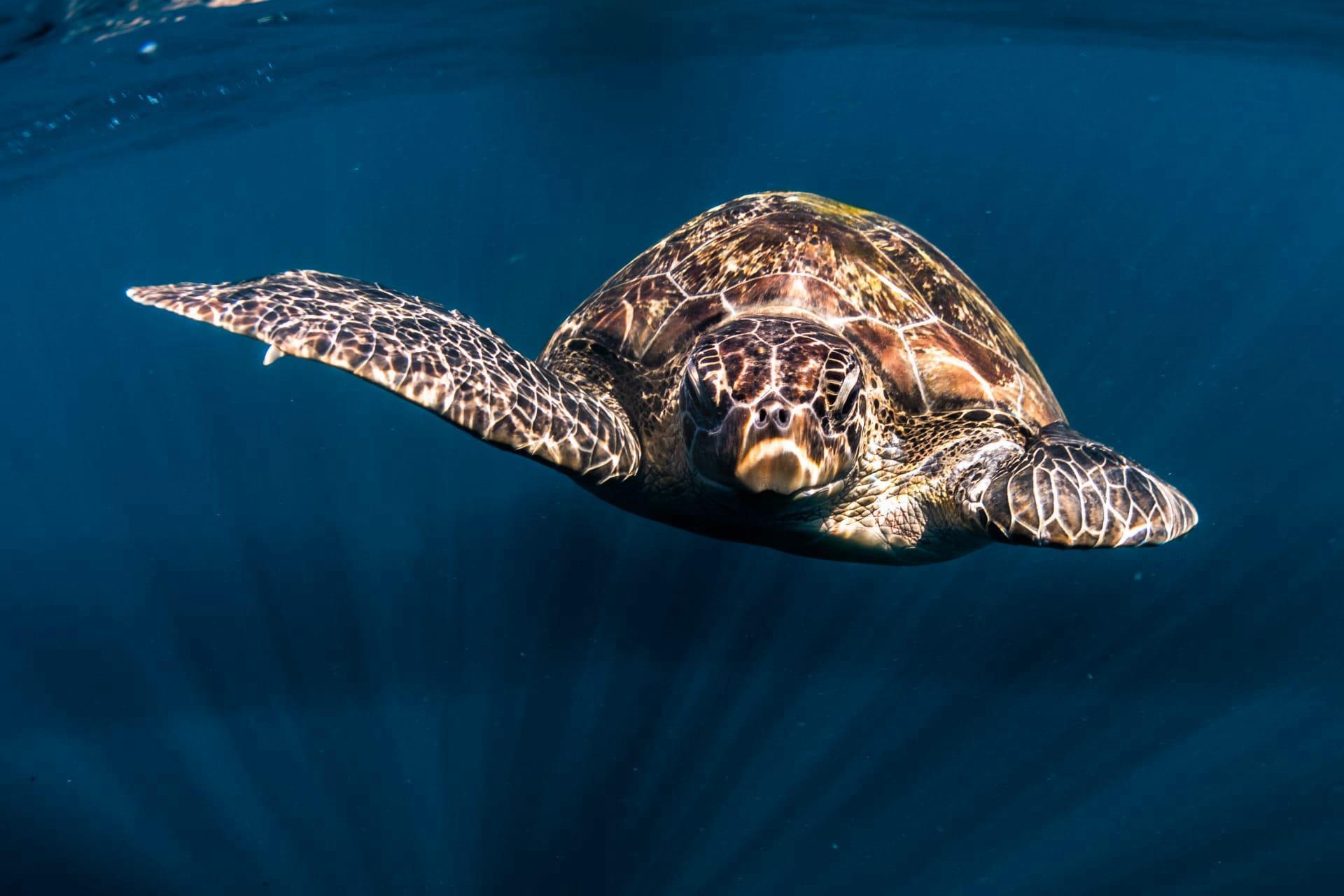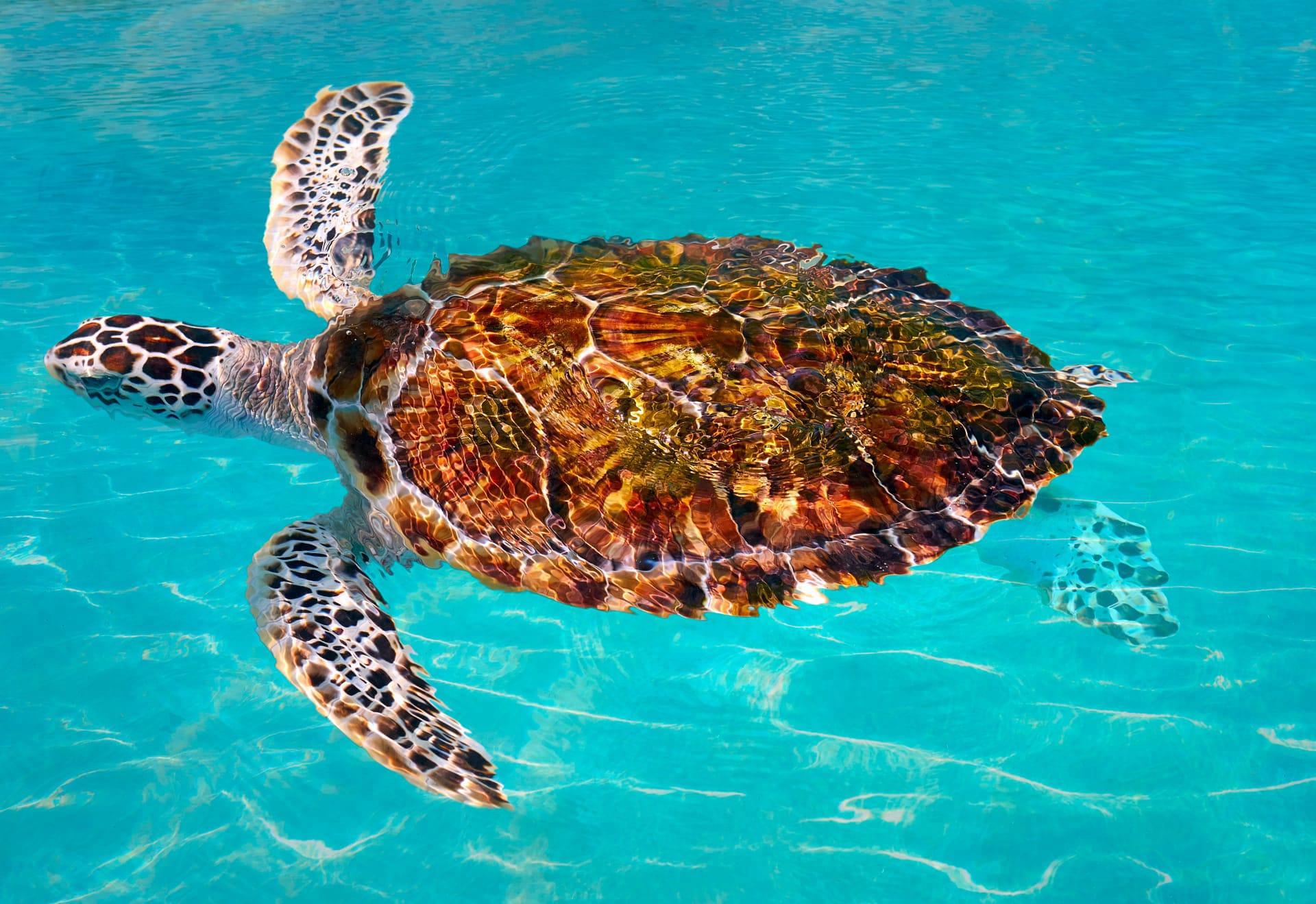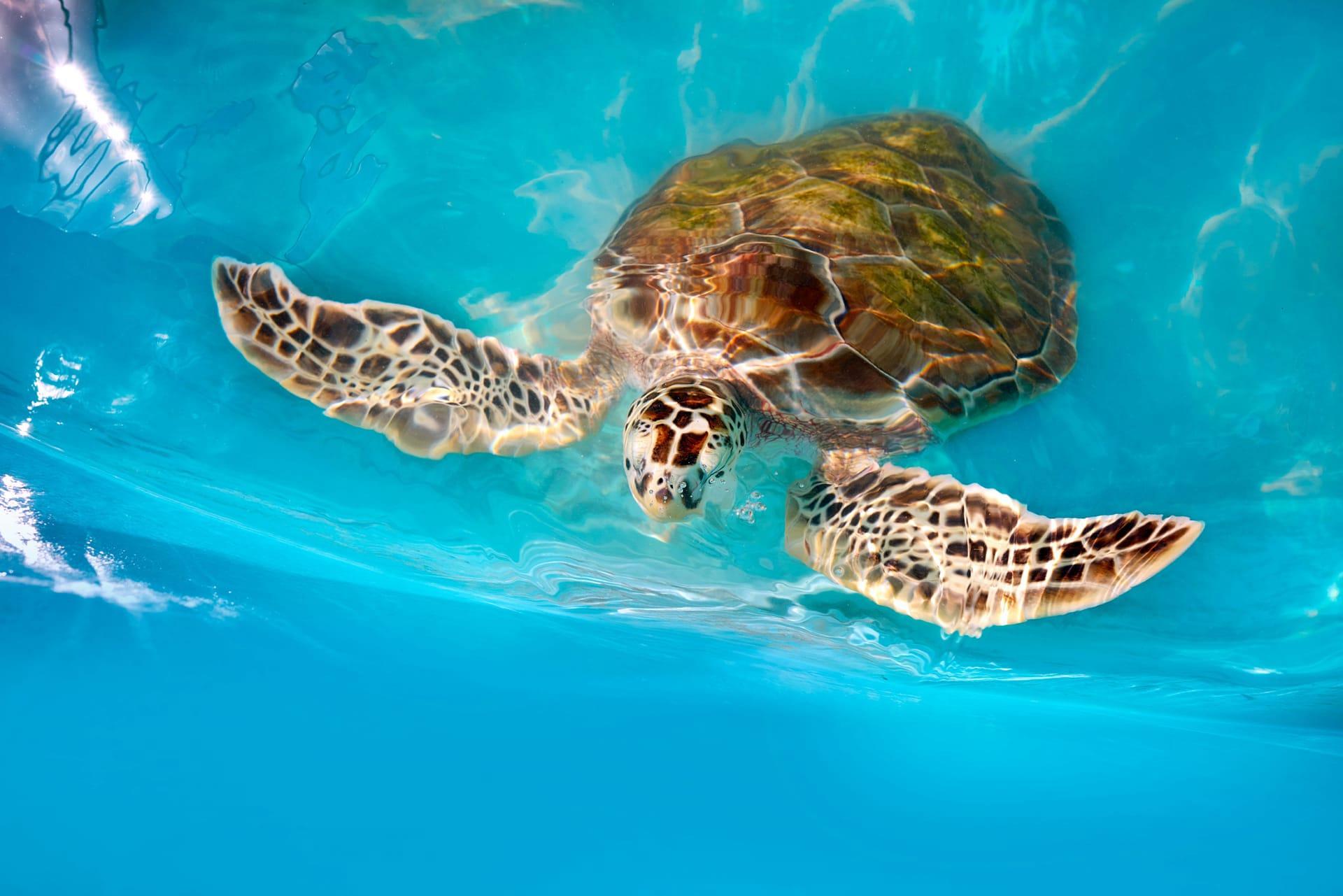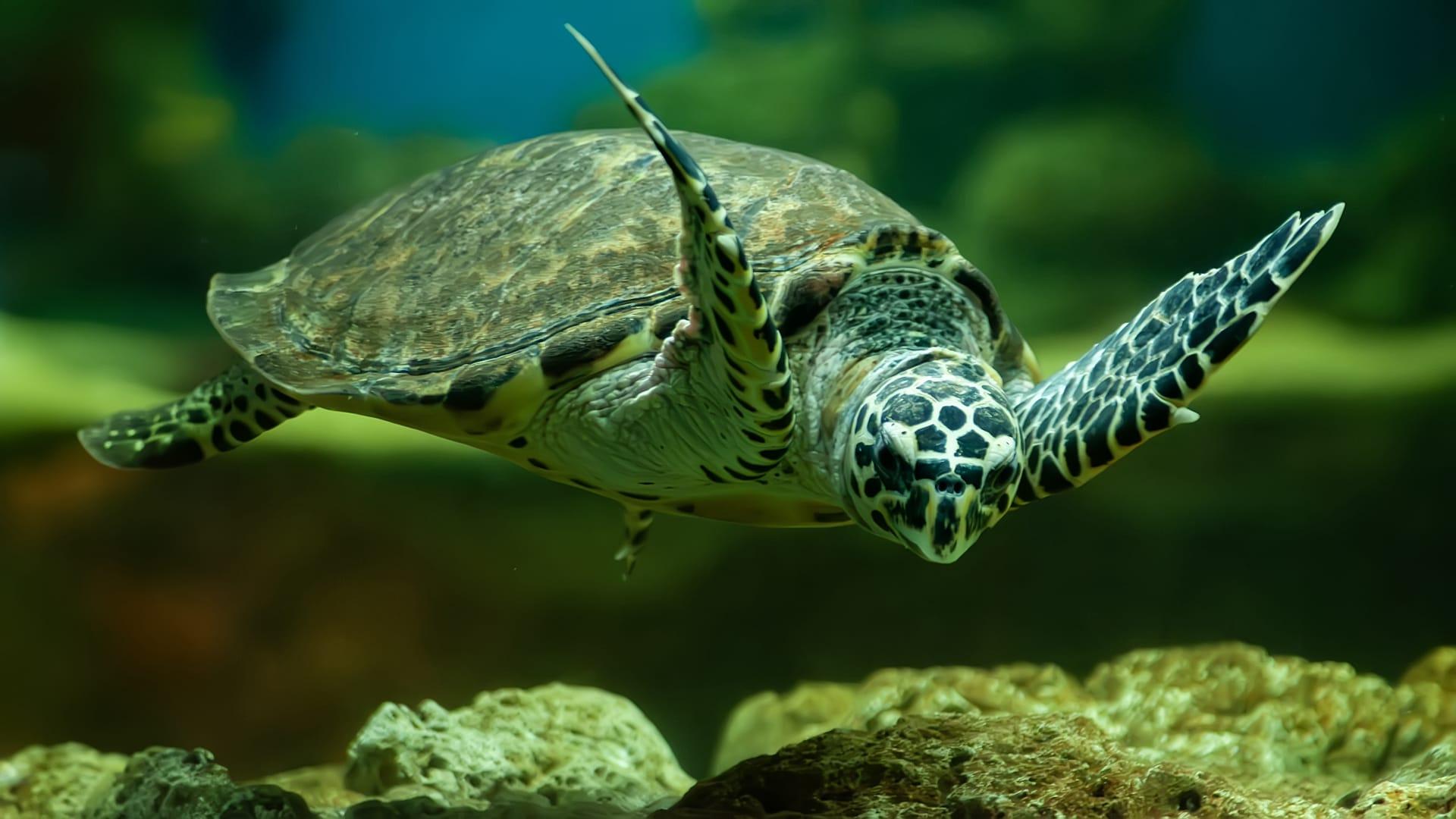Hawksbill Turtle Trivia
- Home /
- Trivia Question /
- Animal /
- Hawksbill Turtle Trivia
1
Question: What makes the Hawksbill Turtle's shell so unique and sought after?
Answer: The Hawksbill Turtle's shell boasts a beautiful, distinct pattern of overlapping scales known as scutes. These scutes have a rich amber color with streaks of brown, black, and red, creating a stunning, tortoiseshell appearance. This unique feature has unfortunately made them a target for poachers, as their shells are highly valued in the illegal wildlife trade for making jewelry and ornaments. Measuring up to 45 inches in length and weighing about 150 pounds, these shells represent a significant portion of the turtle's size and weight.
Question: How does the Hawksbill Turtle contribute to the health of coral reefs?
Answer: Hawksbill Turtles play a crucial role in maintaining the health of coral reefs. They primarily feed on sponges, which grow abundantly on the reefs. By consuming these sponges, they prevent them from outcompeting corals for space. This selective feeding habit allows for more diverse coral species to thrive, which in turn supports a rich marine biodiversity. Their foraging activities also help to aerate the reef's substrate, promoting healthier coral growth.

2
Question: Is it true that Hawksbill Turtles can change their gender?
Answer: This is a common misconception. Hawksbill Turtles, like other sea turtles, have their gender determined by the temperature of the sand where their eggs are incubated. Warmer temperatures generally produce more females, while cooler temperatures result in more males. Once hatched, their gender remains fixed throughout their life, debunking the myth of gender change in these turtles.
Question: Do Hawksbill Turtles really travel thousands of kilometers to lay eggs?
Answer: Yes, they do. Female Hawksbill Turtles are known for their incredible migratory journeys. They travel vast distances across the ocean to return to the beaches where they were born to lay their eggs. This phenomenon, known as natal homing, can involve journeys of over 1,500 kilometers. They navigate using the Earth's magnetic field and other cues, which is a remarkable feat of nature.

3
Question: What is the lifespan of a Hawksbill Turtle, and how do they age?
Answer: Hawksbill Turtles have a notably long lifespan, living up to 50 years or more. However, determining their exact age can be challenging. Scientists often estimate age based on the size and growth rings on their shells, much like counting tree rings. Environmental factors, diet, and habitat quality play significant roles in their growth and longevity.
Question: Are Hawksbill Turtles solitary creatures?
Answer: Yes, Hawksbill Turtles are generally solitary animals. They spend most of their lives alone, roaming the seas in search of food. They only come together during the breeding season. Even then, interactions are brief, primarily for mating purposes. Outside of this, they prefer the solitude of the vast ocean.

4
Question: Can Hawksbill Turtles retract into their shells like some other turtles?
Answer: Unlike some terrestrial turtles, Hawksbill Turtles cannot fully retract their head or limbs into their shells. Their anatomy is adapted for swimming in the ocean, with streamlined shells and flipper-like limbs. This adaptation makes them excellent swimmers but limits their ability to hide within their shells for protection.
Question: What are the main threats to the survival of Hawksbill Turtles?
Answer: The primary threats to Hawksbill Turtles include habitat loss, climate change, and human exploitation. Their nesting and feeding habitats, like coral reefs and beaches, are being degraded by pollution, coastal development, and rising sea temperatures. Additionally, they are hunted for their beautiful shells and are often accidentally caught in fishing gear, leading to serious population declines.

5
Question: How do Hawksbill Turtles communicate?
Answer: Hawksbill Turtles, like most sea turtles, are not known for being particularly vocal or social animals. However, they do use body language and tactile cues for communication, especially during mating rituals. Mothers also communicate with their hatchlings through a combination of chemical and possibly vibrational signals to coordinate hatching and emergence from the nest.
Question: What is the diet of a Hawksbill Turtle, and how does it affect their habitat?
Answer: Hawksbill Turtles primarily feed on sea sponges, along with small amounts of algae, sea anemones, and jellyfish. Their specialized beak-like mouths are perfectly adapted for extracting sponges from crevices in coral reefs. By controlling sponge populations, they play an essential role in maintaining the ecological balance of reef ecosystems, ensuring a healthy and diverse marine habitat.